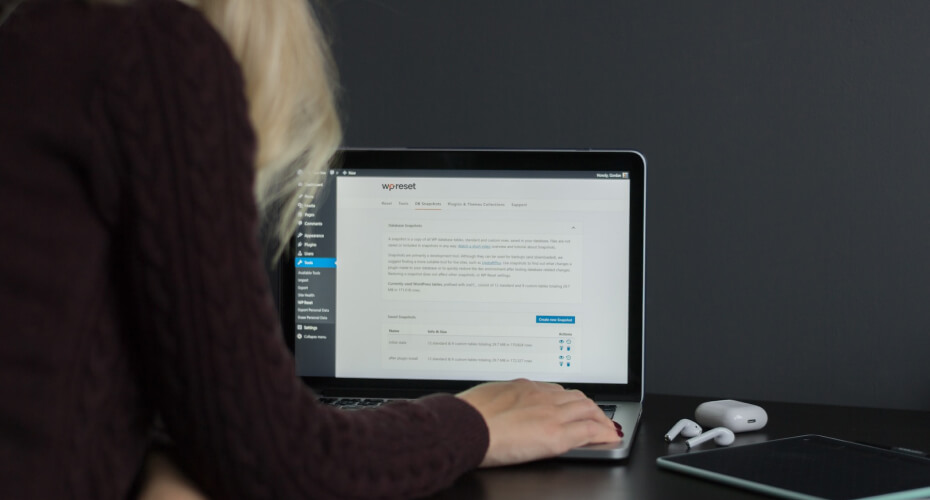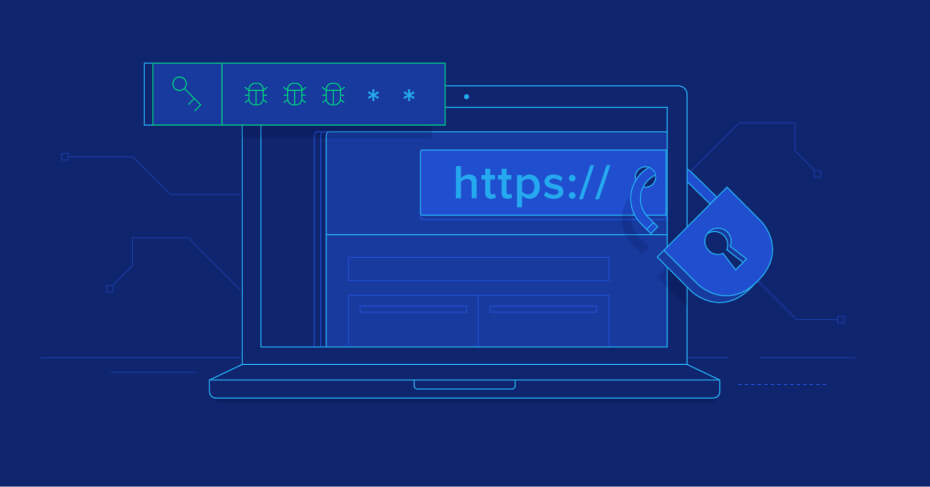WordPress continues to be the most widely used content management system in the world, powering over 43% of websites. It should come as no surprise that a WP website is frequently the subject of cyberattacks given its enormous popularity and the amount of businesses using the WP platform.
The most typical WordPress security holes are listed below, along with suggestions for preventative site security.
WordPress Vulnerabilities and Types
In order to understand what WP vulnerabilities genuinely are, let’s first establish a few crucial terms. The WordPress ecosystem depends on plugins, extensions, integrations, themes, and templates to give websites the functionalities they need.
These capabilities provide you the flexibility to manage anything from blogs and e-commerce sites to membership sites and other cross-functional elements that drive traffic and revenue. You run the risk of having a cyberattack interrupt your business or disclose sensitive customer or staff data if you handle any form of sensitive data on your website.
To name a few, common vulnerabilities can include XSS, CSRF, SQL injection, SSL issues, and the pervasive DDoS attacks. There are also a lot of internal vulnerabilities that result from mistakes like not using strong enough passwords, not utilizing the proper security plugins, or not restricting login attempts.
Another significant WordPress vulnerability that has to be addressed with cybersecurity training is inadequate employee knowledge on all security issues and how to handle sensitive data appropriately.
The Consequences of a Successful Cyberattack
Before we discuss the specific actions you can take to strengthen the security of your WordPress website, let’s take a time to think about the possible consequences of a successful data breach.
As you can see, a cyberattack’s effects can range from short-lived to expensive, including:
- Sensitive data theft
- Loss of business
- Website and brand defacement
- Revenue loss
- Inability to acquire new customers
These are only a few of the issues you can have in this circumstance, so in order to prevent suffering a total loss, you’ll need to have a solid PR plan and disaster recovery strategy.
We will touch on the steps you may take to protect your business and its reputation in the event of a successful cyberattack, but it is safe to assume that taking preventative precautions is worthwhile.

Best Practices for WordPress Security
Let’s move on to the specific steps you can take to secure your website now that you are aware of WordPress vulnerabilities and how they can affect your business.
Install the Right Security Plugin
Installing an excessive number of security plugins is one of the common security mistakes webmasters make. Due to their widespread availability and the promises they make, security plugins can be tempted to be installed in large numbers.
The downside of this strategy is that it may soon result in plugin conflicts, which could slow down the system or introduce new vulnerabilities. Keep to one of the best security plugins for WordPress that has a track record and that its developers update frequently. Consider the excellent choices Wordfence and iThemes Security.
Limit Access and Use Strong Passwords
You’d be shocked at how many website owners introduce WordPress security holes by using passwords that are far too simple to guess. For all of your login information, it’s crucial to utilize solid, distinct password sets, and you should never use the same combinations across other platforms.
To easily accomplish this, employ a password generator that will also securely save your hosting and WP admin login credentials. Then, you must restrict the amount of access you grant for these logins.
Make sure that the access privileges to your admin page are restricted to just you and your webmaster.
Use Two-Factor Authentication
Always use two-factor authentication if you are unsure. Phishing scams have the potential to expose passwords or even steal them. Enable two-factor authentication so that users must verify their identity using an SMS code, a phone call, or an authenticator app in order to access your site. This will safeguard your site from unauthorized entrance.
A potential burglar won’t be able to breach the second line of defense created by this technique.
VPNs: Another Good Option
It’s usually a good idea for everyone on your network to utilize a VPN, especially for any staff members or partners that have access to the backend of your website. By securing and masking the connection with a private IP VPN, the user’s information won’t be intercepted by malicious programs or tracked by bots.
Utilizing a VPN is a quick and easy approach to give your company network and, by extension, your website, an extra layer of security.
Use a Secure Hosting Provider
It should be obvious that you should select a hosting company that places a strong emphasis on security in their hosting plans and services. Talk to providers about the procedures and policies by conducting research on them.
Make sure your provider performs routine backups, implements server-level security measures, and employs robust access controls for all of their customer-facing staff since you can see how data breaches happen in the helpful infographic from TrendMicro above. You also want to confirm that the service provider follows the most recent cybersecurity standards and guidelines.
Invest in Continuous Monitoring
One of the key components of proactive security is constant website monitoring. This tactic is particularly crucial if you host live events on your website.
Live event functionality on websites makes them vulnerable to real-time attacks, audience spam, and chat room phishing. Fortunately, there are several options available to keep users safe and secure when, for instance, they are live shopping on your website while you are streaming or conducting sales-focused webinars. To stop criminal behavior, you must be able to continuously monitor your entire infrastructure.
Use Anti-Spam Software
Use an anti-spam plugin to identify and stop spam on your website, such as nasty comments or bots misusing your contact form, by detecting it. Since you want to restrict bad intent in real time and manage any user-generated content during your live events, which we previously discussed, this plugin can be particularly helpful.
Back up Your Site Regularly
Website backups are a crucial component of any security checklist since they guarantee that, no matter what, you can continue operating. Your website may lose some data or become unstable even after a successful intrusion, so you need to be able to swiftly restore it.
By periodically backing up your WordPress site and keeping the backups securely on external servers or cloud storage services, you can establish this safety net. Your backup schedule may fluctuate depending on how frequently the material on your site is updated. So, if you constantly add a lot of content, you might wish to back up your site every day.

Timely Updates Are Important for Your WordPress Ecosystem
The WordPress core, plugins, and themes are frequently updated at random by business owners that don’t have a set plan or strategy in place.
An all-encompassing quality management system with security components for your infrastructure must include your WP updates as a crucial component. The quality of the user experience and the way you service your consumers through your website are directly impacted by security, thus it needs to be a component of quality management.
An effective technique to update every feature right away as soon as new versions are available is to set up automatic update alerts.
How to Check for Vulnerabilities on Your WordPress Site
Another essential component of a comprehensive strategy for WordPress security is monitoring. You should regularly audit your website in addition to monitoring it in real-time to identify potential threats and stop harmful activity.
Your security approach ought to include frequent security audits, which have to involve pen testing. Pen testing (also known as “penetration testing”) simulates a hacker attack to determine how well the website can withstand one.
Combine monitoring, testing, and performance analysis to provide your IT team the tools they need to give your customers the best possible online experience.
How to Respond if Your WordPress Website Is Hacked
You should put your attention on two stages:
- Resolving the problem
- Control over a brand’s reputation.
Your website will be entirely isolated in the first stage to stop any more data breaches or unauthorized access.
The malicious code will subsequently be eliminated once you have found the attack’s origin. You can then use a secure backup to restore your website.
Having a PR strategy in place for this situation is crucial for reputation management, though. Your top goal is keeping your consumers safe, therefore you should promptly let them know that the problem has been resolved.
Author
Jayesh Patel
Jayesh Patel is a Professional Web Developer & Designer and the Founder of InCreativeWeb.
As a highly Creative Web/Graphic/UI Designer - Front End / PHP / WordPress / Shopify Developer, with 14+ years of experience, he also provide complete solution from SEO to Digital Marketing. The passion he has for his work, his dedication, and ability to make quick, decisive decisions set him apart from the rest.
His first priority is to create a website with Complete SEO + Speed Up + WordPress Security Code of standards.